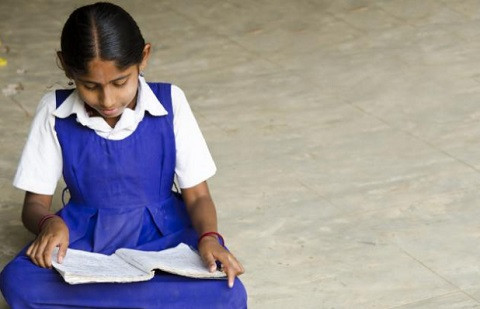
GCED Basic Search Form
Quick Search
You are here
News

Countries worldwide have closed schools at an unprecedented rate in an attempt to slow the spread of the COVID-19 pandemic. It is therefore easy to assume that learners will be safer or better off staying at home than mixing with others in the classroom. The reality, however, is that for millions of girls and young women, particularly those in the world’s least developed countries, school shutdowns bring other risks. Speaking at a recent UNESCO webinar, Suzanne Grant Lewis, IIEP Director, emphasized that ‘evidence shows that both education and gender are neglected in responses to disease outbreaks. We need to pay more attention to the gender dimensions of the coronavirus school closures.’
What are the gender dimensions of the closures?
Domestic burdens
In many societies, women and girls take on the majority of unpaid domestic and childcare tasks, which will increase when schools and workplaces close and people are confined to their homes. This affects women, who make up the majority of the teaching force in many contexts, as well as girls, who are unable to continue their learning at a distance.
Healthcare demands
Women and girls form the majority of the healthcare workforce, whether paid or unpaid. They are therefore more exposed to the coronavirus, whether caring for others at home or in healthcare facilities. For instance, data show that in Spain and Italy respectively, 72% and 66% of infected healthcare workers are female.
Domestic violence
The health risks for girls who can no longer attend school are not limited to the virus itself. Without school – a place of safety as well as education – as a lifeline, home confinement means there is a heightened risk of domestic violence and sexual abuse. Data available so far indicate that domestic violence rates have increased in countries as varied as Argentina, France, and Singapore.
Sexual and reproductive health
Following the Ebola crisis, Sierra Leone saw a huge rise in adolescent pregnancy, which, according to the children themselves, was directly linked to school closures. In some communities, pregnancy will be a permanent barrier to a girl returning to education even once the COVID-19 crisis ends. Moreover, during the crisis, maternity and reproductive resources and facilities are likely to be redirected to counter the pandemic, posing additional threats to the health and safety of adolescent girls and young women.
What can be done to overcome these problems?
With these issues in mind, and the knowledge that girls are less likely to return to school after a prolonged absence, education authorities must take steps to avoid a disastrous reversal of the recent progress made in girls’ and women’s learning. In her opening remarks, Ms Grant Lewis warned that COVID-19 will exacerbate gender inequalities. She urged communities to act quickly, suggesting a number of measures including:
- ensuring equitable representation of women and men in crisis-related decision-making and tapping into women’s’ expertise;
- producing gender-sensitive data relating to the crisis;
- using women’s networks at the community level to organize responses to the crisis;
- encouraging girls to continue learning during and after the crisis and to support their peers;
- encouraging men and women to share childcare and domestic work in the household and community;
- denouncing domestic violence as well as putting in place safe environments for female victims of abuse.
Education planners should be aware of the particular threat that the coronavirus school closures pose to girls and women, and ensure that plans for learning continuity take this into account. The digital gender divide needs to be overcome if girls are to benefit from online distance learning solutions; studying schedules must be flexible where possible so that learning can take place around the domestic demands that are disproportionately made on girls and women; and targeted measures should be taken to ensure that as many female learners as possible return to schools when they reopen.
‘A universal issue’
No country can afford to ignore the gender dimensions of COVID-19 school closures. As Ms Grant Lewis said, ‘this is a universal issue. All countries must consider how this crisis might widen inequalities, and all countries need to take action to address them.’ The full impact of this crisis will not be known for some time, but it is crucial to make sure that girls do not miss out on their education and on their futures.
URL:
http://www.iiep.unesco.org/en/covid-19-school-closures-why-girls-are-more-risk-13406
